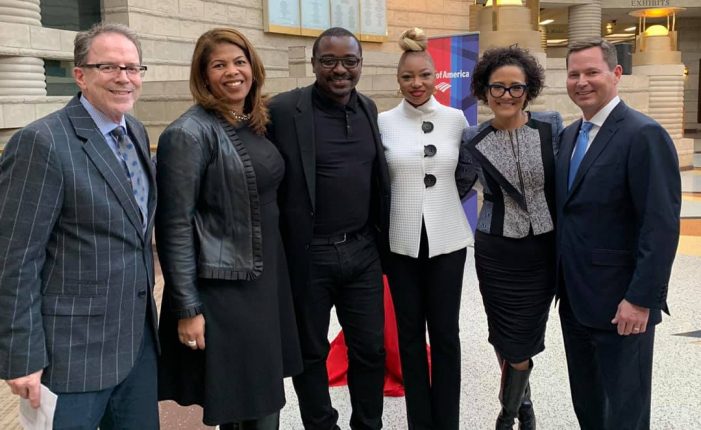Calandra Walker Jarrell looks at the audience in the Charles H. Wright Museum of African American History’s General Motors Theater before making a slightly unexpected announcement.
“We’re going to have some fun,” says Jarrell, Bank of America’s Global HR Diversity & Inclusion executive. She’s the moderator of “A Courageous Conversation: The Art of Impact.”
“This is a serious topic,” she says. “It’s a serious issue, but if we’re going to dedicate ourselves to diversity, inclusion and making the world a better place…we should have a good time doing it.”
After a collective round of “yeses” and applause the dialogue begins.
The March 14 discussion was convened by Bank of America and the Alvin Ailey American Dance Theater. It included Jarrell, as well as Robert Battle, the dance theater’s artistic director, and Bank of America’s Matt Elliott, Midwest region executive for business banking and Detroit market president. Tom Costello, director of Multicultural & Inclusion Initiatives at University of Detroit Jesuit High School, and Portia Roberson, CEO of Focus: HOPE, also participated.

During the course of an hour there was an honest and raw conversation about diversity, inclusivity, representation, and empathy, and how art plays a role.
When asked about dance companies’ roles in driving cultural understanding Battle says exploring what it feels like to be in someone else’s shoes is what it means to create a dance.
“In some ways, I believe we were all born with empathy,” Battle says. “You’ve got to learn to hate.”
Learning to hate also means the ability to learn things about one’s biases and ability to acknowledge one’s own privilege, says Costello – a straight, white, able-bodied, Christian man.
“You need to learn to acknowledge it, be aware of it, and then take some action,” he says. “You need to be an ally.”
Being an ally means listening to understand and not just to respond, which is the most important communication skill in becoming culturally competent, panelists agreed.
“You can’t have empathy for someone until you understand their context,” Elliot says.
While having open and honest discussions like “A Courageous Conversation” can be tough, they are also vital, the panel added.
“The biggest thing, from (Bank of America’s) point of view, is that this is not a ‘feel-good’ thing, necessarily. This is a business imperative,” Elliott said after the discussion. “We do this because it’s important and also because it makes the bank a really good place to work. You can bring your whole self” to the office.
Since it began the series in 2015 more than 60,000 Bank of America employees have taken part in “Courageous Conversations.”
“The Art of Impact” helped highlight how performance encourages understanding and empathy.
“Dance is wonderful because we have the luxury of ambiguity. Where language falters dance excels,” Battle says.
At one point the audience was asked if there were any topics they wanted the Alvin Ailey Dance Theater to perform on stage. Suggestions ranged from resilience to parenting.
Roberson discussed the importance of representation.
“It’s about exposing our community to things they do not have the opportunity to be exposed to,” she says. You “see yourself reflected on that stage…then you start to envision what your life can be further down the road.”
Battle agrees that seeing representation of a diverse community is important. While growing up in a tough neighborhood, he used to carry a hammer for protection, along with his dance shoes and tights. As a student, he watched the Alvin Ailey Dance Theater on tour.
“There I was, seeing the men, specifically, dancing with such courage and strength and grace. What that meant for me was I didn’t need the hammer anymore, because the hammer was here and here,” he says, pointing to his heart and head.
Lead photo: Tom Costello, Portia Roberson, Robert Battle, Calandra Walker Jarrell, Tiffany Slemmons Douglas and Matt Elliott at Charles H. Wright Museum of African American History. Photo courtesy of Bank of America


